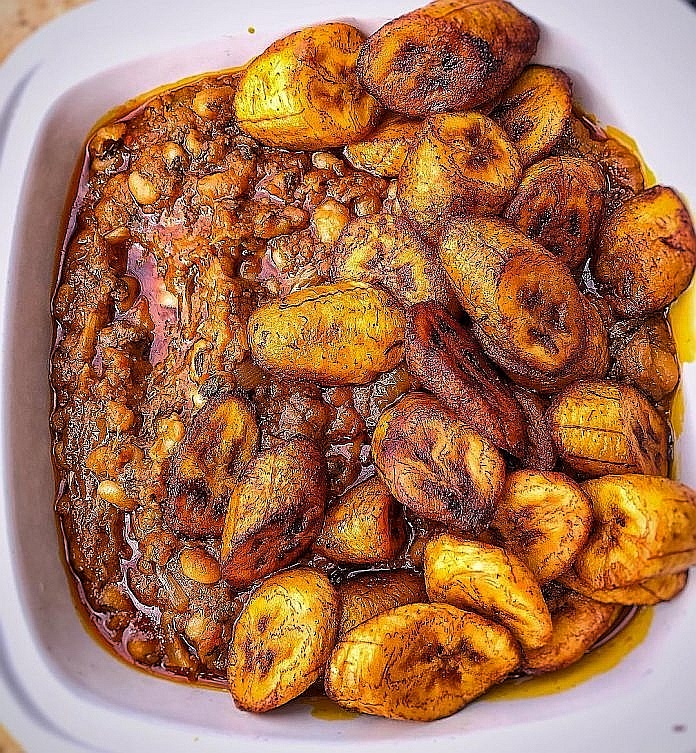Scientists agree the answers lie in a complex formula that includes our social connections, sleep habits, happiness levels, the environment, and having a sense of purpose.
Perhaps the most important ingredient, though, is the food and drink we consume.
Here is a recap of 10 key learnings of Buettner’s philosophy on following a Blue Zones diet.
1. Plant slant
See that 95 per cent of your food comes from a plant or a plant product. Favour beans, greens – especially spinach and kale – sweet potatoes, nuts and seeds, and wholegrains.
2. Retreat from meat
People in four of the five Blue Zones consume meat, but do so sparingly, as a celebratory food or a small side dish.
Consume meat no more than twice a week, favouring whole, free-range meat and avoiding processed meat such as bacon and hot dogs.
3. Fish is fine
Up to three ounces of fish daily (about the size of a deck of cards) is commonly consumed in Blue Zones.
Eat fish in the middle of the food chain, such as trout, snapper, grouper, sardines and anchovies, to avoid high levels of mercury. Avoid overfished species like Chilean sea bass, or farmed fish like salmon.
4. Ditch dairy
Cow’s milk does not feature significantly in any of the Blue Zones diets, although fermented goat and sheep’s milk, made into yogurt or cheese, do figure prominently in the diets of Ikarian and Sardinian centenarians.
Research shows our digestive systems are not optimised for cow’s milk products and we can get just as much calcium from a cup of cooked kale or a cup of tofu as a cup of milk.
5. Occasional eggs
Blue Zone residents usually eat no more than three free-range eggs a week. As with meat, eggs are consumed as a side dish, alongside wholegrains or plants.
Nicoyans fry an egg to fold into a corn tortilla to have with beans, while Okinawans boil an egg in their soup.
Mediterranean Blue Zone residents fry an egg as a side dish with bread, almonds and olives for breakfast.
6. Beans please
Eat at least half a cup of beans and legumes daily, whatever kind. Beans are the fundamental cornerstone of every Blue Zone diet on the planet, from black beans in Nicoya, to lentils, chickpeas and white beans in the Mediterranean, and soybeans in Okinawa.
Blue Zone people eat as much as four times the amount of beans as those in most developed countries, on average.
7. Slash sugar
Blue Zone centenarians only eat confectionery during celebrations. Skip any product in which sugar is among the first five ingredients and limit treats to 100 calories, such as a couple of squares of dark chocolate, or a handful of dried fruit.
Seven added teaspoons of sugar a day should be the maximum. Watch for low-fat products that are sugar-sweetened to make up for a lack of fat.
Blue Zones diets include at most seven added teaspoons of sugar a day.
8. Nibble on nuts
Aim to eat two handfuls of nuts a day, which is about the average eaten in a Blue Zones diet.
Almonds are eaten in Ikaria and Sardinia, pistachios in Nicoya, and Loma Lindans eat all kinds of nuts.
A Harvard study showed that nut eaters have a 20 per cent lower mortality rate than non-nut eaters.
9. Sourdough or wholemeal bread
Most commercial breads are based on bleached white flour, which metabolises quickly into sugar – making for empty calories.
Traditional Blue Zones breads are made with wholegrains such as wheat, pumpernickel, rye and barley; or sourdough – breads that are made with a naturally occurring bacteria that creates products with less gluten and a longer shelf.
10. Favour whole foods
Most of the planet’s centenarians eat whole foods – food that is not processed at all, or processed minimally (such as tofu from soybeans). They mostly eat them raw, cooked or ground.
Blue Zones’ recipes tend to contain half a dozen or so ingredients simply blended together, or that have been fermented or pickled. As a result, the long-lived rarely ingest artificial preservatives.








